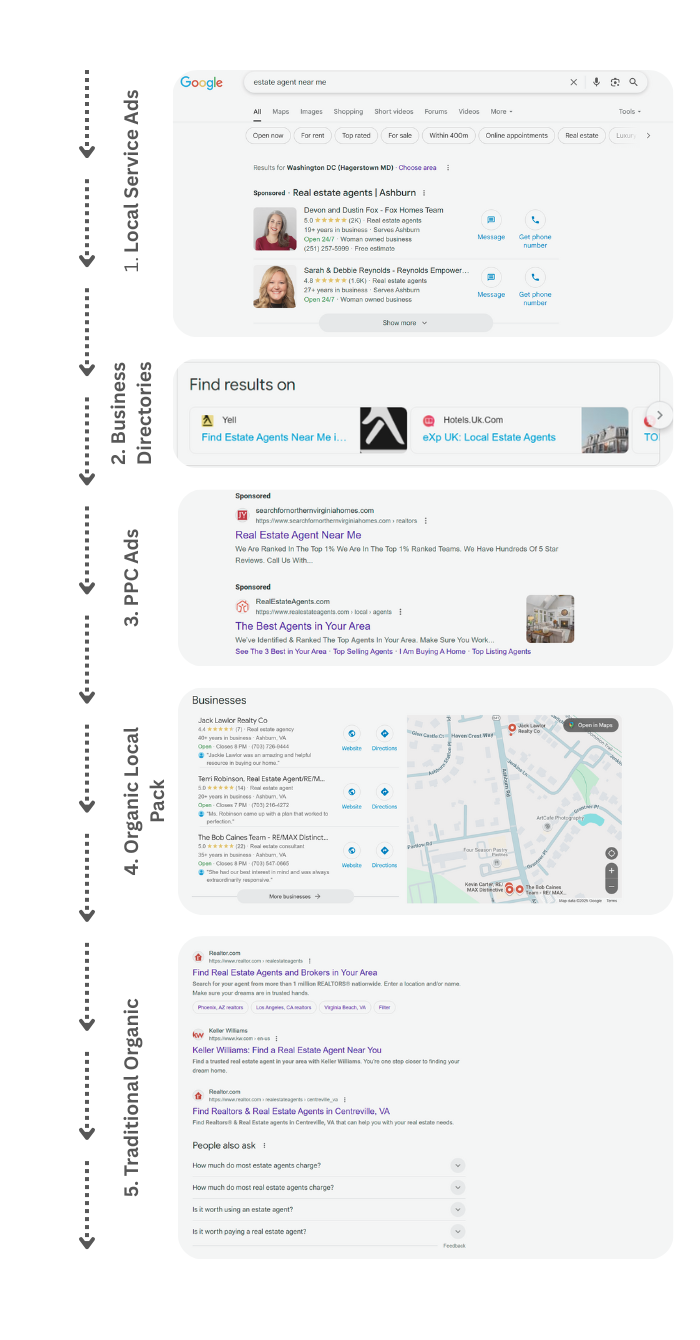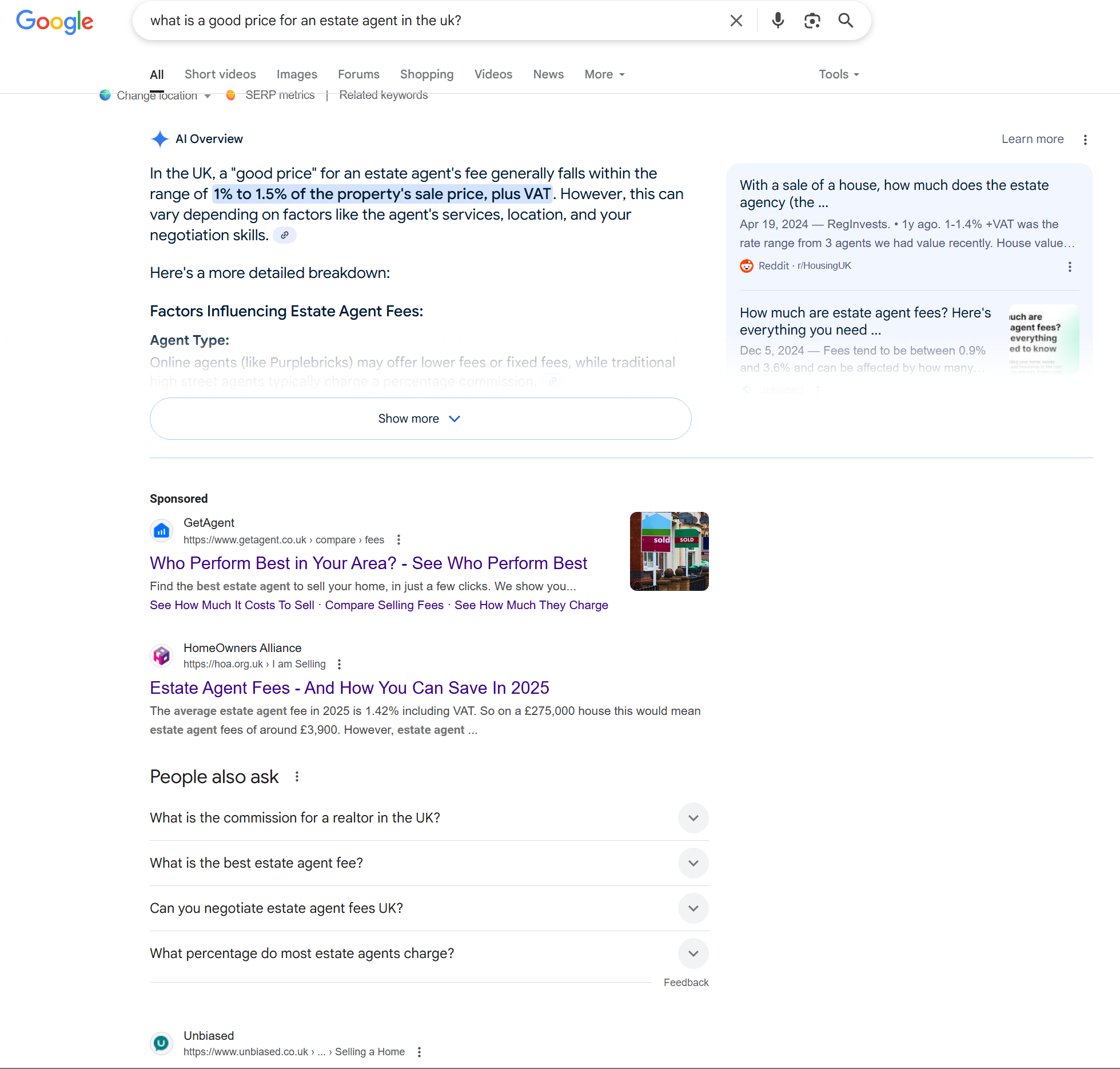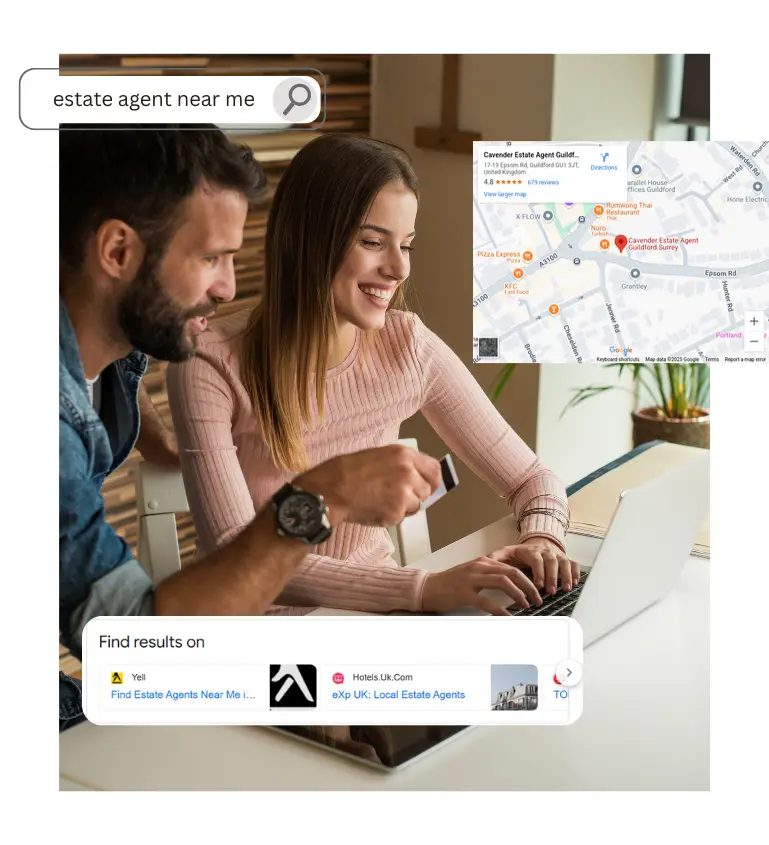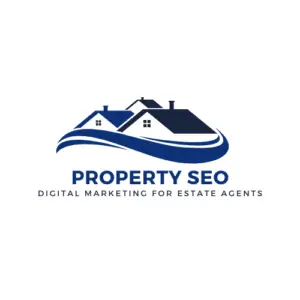Method - How I optimise For Search Engines
1. Local Service Ads
Google’s paid “call-only” listings right at the top for service queries.
How I optimise: I set up and refine your Local Service Ads account, selecting exact service categories, adjusting bids and location targeting, and driving up your review score.
Benefit: You get high visibility – for high-intent searches, generating direct phone-call or message leads without waiting for organic clicks.
2. Business Directories
The “Find results on” block linking to sites like Yell, Yelp and Facebook.
How I optimise: I audit, claim and standardise your name, address and phone details across key directories, ensuring each citation is accurate and complete.
Benefit: Consistent listings build Google’s trust, boost your local authority and make it easy for prospects to find and contact you.
3. PPC Search Ads
Traditional sponsored ads in the main search results.
How I optimise: I run lean, test-first Google Ads campaigns against your top local keywords. I group these keywords, while creating and then A/B-testing ad copy while tightening budget to maximise cost-per-lead.
Benefit: Instant, top-of-page exposure for target terms and a predictable, measurable stream of enquiries.
4. Organic Local Pack
The map-based listings (the “three-pack”) showing Google Business Profiles.
How I optimise: I enhance your GBP with geo-tagged posts, review generation and reply’s using reputation management, category tweaks and local link-building to push you into the top three.
Benefit: More map clicks and click-to-call actions, capturing prospects before they even view organic links.
5. Traditional Organic Results
The classic blue links in the main body of search results.
How I optimise: I implement on-page SEO (metadata, schema and locally focused content), conduct technical audits and pursue PR-style link building for authority.
Benefit: Sustainable visibility for residual clicks, strengthening your domain’s reputation and long-term traffic growth.

Process – Optimising For High Intent Keywords That (Currently) Avoid AI Overviews
In my example above, I used “estate agent” for the business category. So, when a user searches for “estate agent near me”, this is an example of a “high intent” keyword. In this instance, people are not searching for advice, they are not trying to learn information. They already know what service they are looking for, and want to know what options are available in their area. My initial keyword research will uncover all keyword variations with this same level of intent, and focus on increasing your visibility for all variations, focusing primarily on sections 1 – 4 initially. Many people will not scroll down to section 5. and many SEO’s still use keyword tools that focus on ranking first here, without realising how detrimental this can be. It has it’s value at mid-stage development, but is not a priority.
“You will notice that these high intent keywords will generally avoid AI Overviews”. These add another layer above section one, for queries that traditionally pulled in organic results through blog posts. The value in blog posts is moving downwards in terms of traffic generation. However, they do still serve the purpose to build total authority metrics for a website as a whole – demonstrating knowledge and experience. However, the old SEO method of showing a client rank and traffic metrics, based on visits to blog posts in now not only out-dated, but never really had a good level of value in terms of ROI. Yes, over time, if people would run into your content many times in their searches for information, you would become the “market authority” in their mind – placing you at the top of mind when they got closer to being that “High Intent” searcher. But now, AI is taking over in this respect.
It is possible to optimise your content to appear in the links within the “AI Overview”, and this has value, but it is greatly reducing the inflow of traffic to blog posts, and this trend will continue, so it is important to get ahead of the game now.

An AI Overview Example
On the left, you can see I have typed a typical question many people will search for before they reach a level of high intent. They are still in the learning process and are not ready to reach out to a business near them. You will see, right at the bottom of my image, the fist “Organic” search result. The AI overviews take almost half the page, and when expanded, a whole lot more. We then have Ads and “People Also Ask” to optimise for, before even ranking in First place for the organic results, hidden all the way down the page!
My way of working on SEO is to take an approach that increases your visibility in Google for high intent keywords from the start. Traditionally, in SEO, focus has always been centred around making as many pages of a website, rank as high as possible. Many SEO’s are still in this mindset and it is outdated in many ways.
For example, where Google was once essentially a list of links to websites and nothing more, having pages rank in the top 3 organic positions of those website links was the goal. This was done by adding as many relevant keywords to a page as possible, well written, coupled with backlinks and technical fixes to signal to Google your page “deserved” to be placed above all others. We now need to add in sections 1 to 4 – this will result in getting ahead of the competition.
Optimising For All Five Sections Of The Search Results
My Process: A Data-Driven Guide to Local Visibility and Conversion
Why Modern SEO Is More Than Rankings
So my way of working on SEO is to take an approach that increases your visibility in Google for high-intent searches. Traditionally, SEO has focused on making as many pages as possible rank in the top three organic positions by stuffing keywords, earning backlinks and applying technical fixes to signal that your page “deserved” to sit above the rest. That mindset is now outdated.
A typical high-intent local query (for example, “estate agent Guildford”) today might show:
Paid ads
“Find results on” directories (Yell, Yelp, Facebook)
Map pack with Google Business Profiles and click-to-call links
Traditional organic listings, often buried well below the fold
Most users click an ad or a map result long before they ever scroll to the old-school organic links. If you only chase that fifth section, you miss the majority of clicks—and the phone calls, messages and footfall that really matter.
Which Path Fits Your Stage?
Whether you’re just building early-stage visibility or you already have traffic you need to convert, this framework adapts:
Early-Stage Visibility
Focus on ads, directories and map pack optimisation via Google Business Profile optimisation so you capture local demand at first glance.

Conversion optimisation
Once the traffic arrives, refine your site (metadata, CTAs, form flows and notifications) so more of those clicks turn into genuine enquiries.
By tackling sections one through four first, then reinforcing section five with on-page SEO, schema and PR-driven link building – you capture every click that matters in today’s search experience.
The Three Step Process
1. SERP Analysis And Recommendations
• Audit every element of today’s results page: ads, directories, map pack and organic.
• Map out exactly where your highest-intent clicks happen, and with what keyword variations.
• Analyse the competition, market trends, and gaps in your current marketing channels.
2. Growth in Visibility & Awareness
• Optimise Google Business Profile and review strategy.
• Claim and standardise citations in Yell, Yelp, Facebook and niche directories.
• Run lean, test-first PPC campaigns against your top local keywords.
3. Conversion Rate Optimisation
• Audit page-speed, form-drop-off and user journeys.
• A/B-test headlines, calls-to-action and social proof.
• Implement call-tracking and UTM-tagged reporting so you measure real-world ROI.
